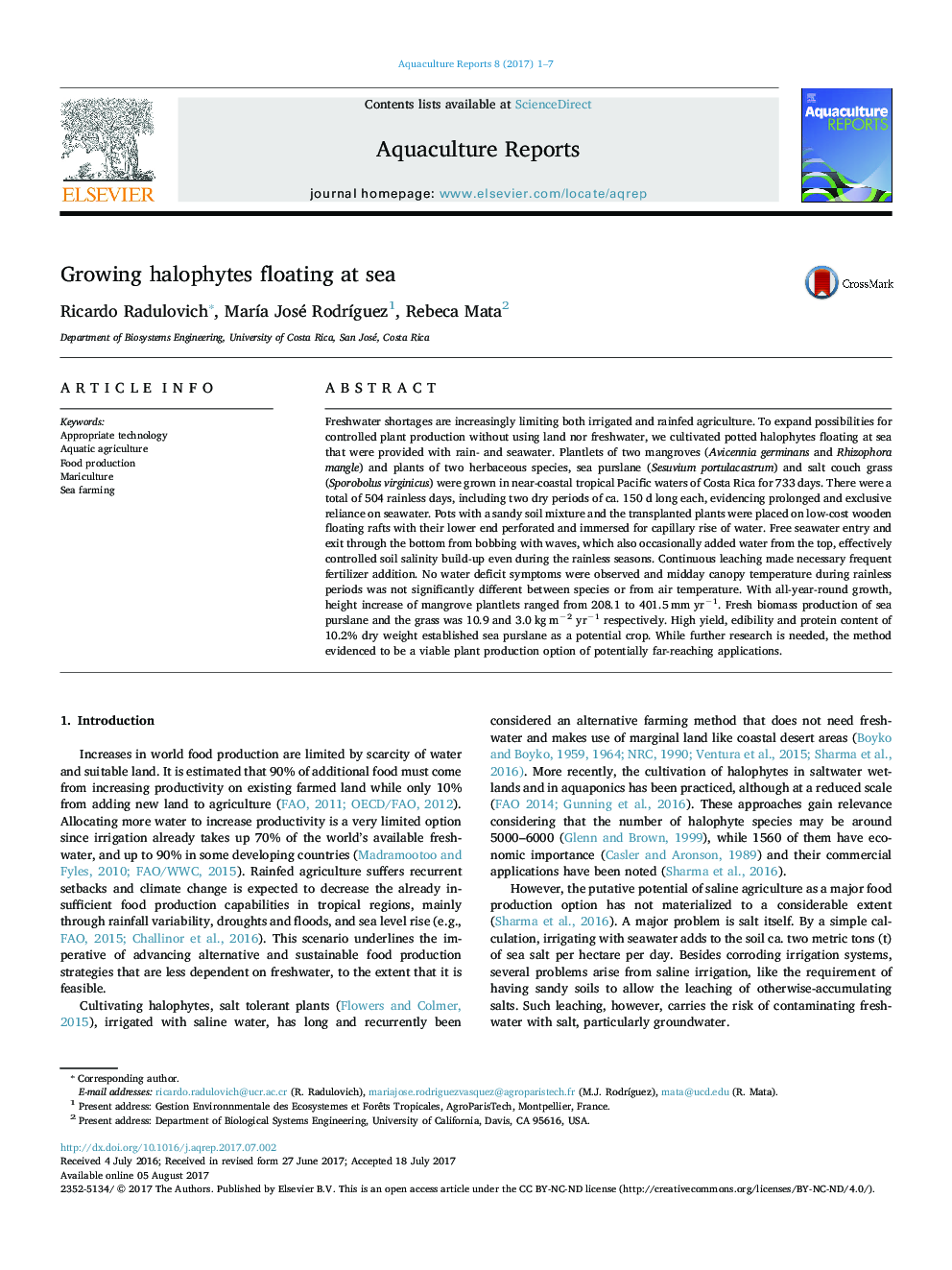| کد مقاله | کد نشریه | سال انتشار | مقاله انگلیسی | نسخه تمام متن |
|---|---|---|---|---|
| 5752703 | 1620272 | 2017 | 7 صفحه PDF | دانلود رایگان |
- Halophytes grew for 733Â days floating potted at sea with seawater as main water source.
- There was a clear need to use fertilizer applied frequently into the pots.
- Extrapolated yields of edible sea purslane were 10.9 kg mâ2 yrâ1 on a dry weight basis.
- This production method can be implemented to produce plant biomass for food without requiring any freshwater.
Freshwater shortages are increasingly limiting both irrigated and rainfed agriculture. To expand possibilities for controlled plant production without using land nor freshwater, we cultivated potted halophytes floating at sea that were provided with rain- and seawater. Plantlets of two mangroves (Avicennia germinans and Rhizophora mangle) and plants of two herbaceous species, sea purslane (Sesuvium portulacastrum) and salt couch grass (Sporobolus virginicus) were grown in near-coastal tropical Pacific waters of Costa Rica for 733 days. There were a total of 504 rainless days, including two dry periods of ca. 150 d long each, evidencing prolonged and exclusive reliance on seawater. Pots with a sandy soil mixture and the transplanted plants were placed on low-cost wooden floating rafts with their lower end perforated and immersed for capillary rise of water. Free seawater entry and exit through the bottom from bobbing with waves, which also occasionally added water from the top, effectively controlled soil salinity build-up even during the rainless seasons. Continuous leaching made necessary frequent fertilizer addition. No water deficit symptoms were observed and midday canopy temperature during rainless periods was not significantly different between species or from air temperature. With all-year-round growth, height increase of mangrove plantlets ranged from 208.1 to 401.5 mm yrâ1. Fresh biomass production of sea purslane and the grass was 10.9 and 3.0 kg mâ2 yrâ1 respectively. High yield, edibility and protein content of 10.2% dry weight established sea purslane as a potential crop. While further research is needed, the method evidenced to be a viable plant production option of potentially far-reaching applications.
Journal: Aquaculture Reports - Volume 8, November 2017, Pages 1-7
